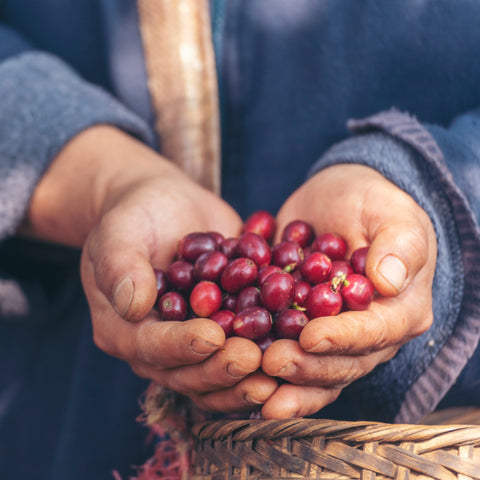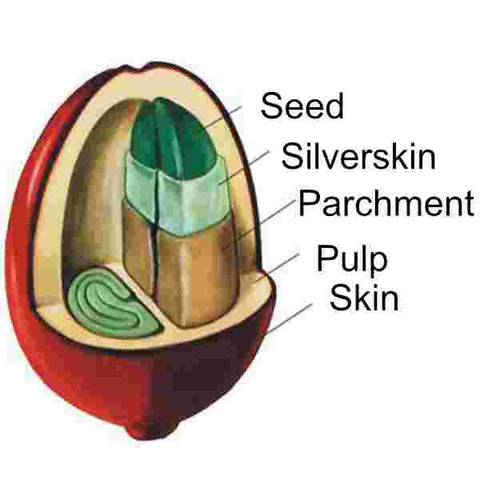The Fruit
Coffee is a most common drink in everyday lives, but let's talk about those living in non-coffee countries, who have never seen a coffee cherry or sometimes called coffee berry or coffee fruit. We will call it fruit to avoid mixing up.
The size of the berry varies, depending on coffee varieties, but in general, it has the size of a small cherry. Unlike cherry, specialty coffee berry has much less pulp, and almost the entire volume occupied the seed.

Sometimes the fruits are squeezed to make a drink, but it is not a really good source of sweet refreshing juice, because you have to put a lot of effort to separate the seed from the pulp.
The skin of coffee fruit is turning from green color to deep red when it is completely ripe. Although some coffee trees have some special yellow or orange color of matured fruit, it can happen when the red tree crosses the yellow-fruiting tree.
Even though the color doesn't influence the harvest, the farmers try to avoid yellow-fruiting trees as it is harder to determine when the coffee fruit is ripe.
Red fruit starts green, then turns to yellow, and after that turns red. It's much easier to identify the ripeness when future coffee beans are being picked by hand. Like almost all fruits on the planet, ripeness determines by the quantity of sugar in the fruits, which is an important consideration when farmers are growing high-quality and delicious coffee.

The seed
Coffee seed or we should call it coffee bean has a few layers. The first layer around the bean is called silverskin, and after it goes the protective layer - parchment. The sticky, sweet coating after parchment is called Mucilage, then there is pulp, and finally skin. You can see in the picture below, how the coffee cherry looks. Almost everything around the bean will be removed during the processing, leaving us high-quality green coffee that we can roast, grind and brew in the end.
If you notice that the coffee bean is flattened along one side this is because most coffee fruits contain two seeds, which are faced each other. But sometimes you can find only one rounded seed called Peaberry.
It's a naturally occurring mutation in Arabica and Robusta varieties that leads to developing only one bean instead of two inside the coffee fruit. Peaberries are normally separated from the rest of the crop. But some people believe that peaberries have particularly desirable qualities.

Specialty coffee goes through many stages to become this full of aroma, hot drink that we all love so much!

